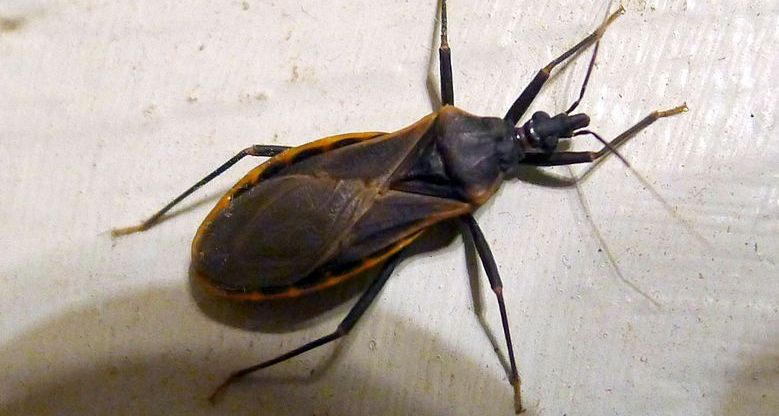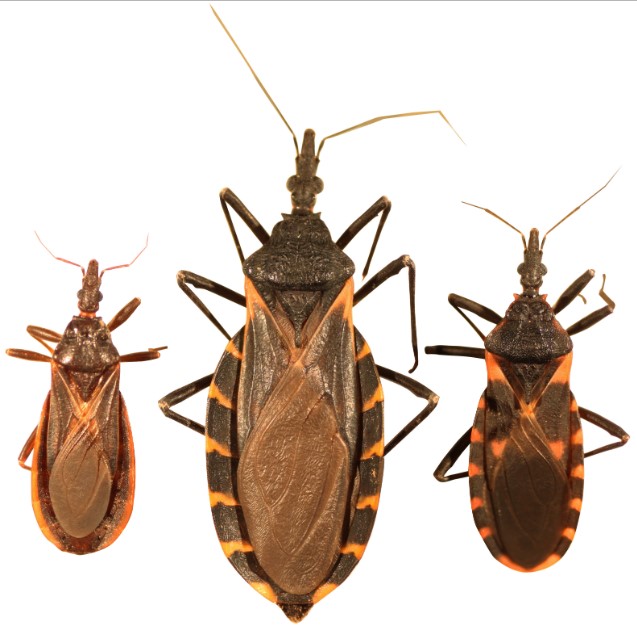What is a kissing bug? Beware of this blood-sucking insect

Reduviidae – Assassin Bug Family. (Wikimedia Commons)
Kissing bugs (also known as conenose, vampire and assassin bugs) are triatomine species which are potential vectors of diseases.
Despite its name, you don’t want to be kissed by this creature. Kissing bugs feast on blood, and they may carry a parasite that causes Chagas disease.
Most triatomines look for blood at night, when people are asleep. It has its name because it typically sucks blood from the skin close to a person’s mouth.
As the insect feeds on one’s blood, it often defecates near the bite, leaving behind the parasite known as Trypanosoma cruzi (if it is a carrier). This is what can cause Chagas disease, which has several symptoms such as fever, swollen lymph nodes and serious pain.
In 2015, Chagas was estimated to be the cause of 8,000 deaths.
Where are kissing bugs located?
Mainly found in the Americas, the insects have recently made headlines as they spread further north through the US, having travelled from South and Central America.
The Centers for Disease Control and Prevention (CDC) said in a statement on April 19 that one kissing bug bit a girl in Delaware, the state’s first-ever confirmed case.
Moreover, the creatures have become wide-spread globally, with some reports that kissing bugs are heading to Europe and Australia.
“Europe is its most recent port of call,” according to parasitology expert Charles Ebikeme of UNESCO. “In recent years, it has become more apparent that Chagas is now not just confined to the Americas. It hasn’t been for some time.”
What do kissing bugs look like?
In terms of a kissing bug’s size, the fully grown insects are approximately one inch long.

(Left to right) Triatoma protracta, the most common species of kissing bugs in the western U.S.; Triatoma gerstaeckeri, the most common species in Texas; Triatoma sanguisuga, the most common species in the eastern U.S. Scale bar represents 25mm or approximately 1 inch.
They also have unique markings, with a blackish, brown body, and orange-red markings. The face/head is also cone-shaped, hence its other nickname, conenose bug.
Where are triatomines found?
Like most insects, they can be difficult to spot.
The creatures may be found in cracks in walls, floors and gaps between furniture.
How to protect your home from kissing bugs
They are unwanted house guests, to say the least. But there are ways you can prevent them from entering your home:
- Turn off outdoor and indoor lights
- Seal up any crack or gap they may hide in
- Remove piles of rubbish or materials like wood from around the home
- Screen up windows and doors, especially if you’re in a warmer area

